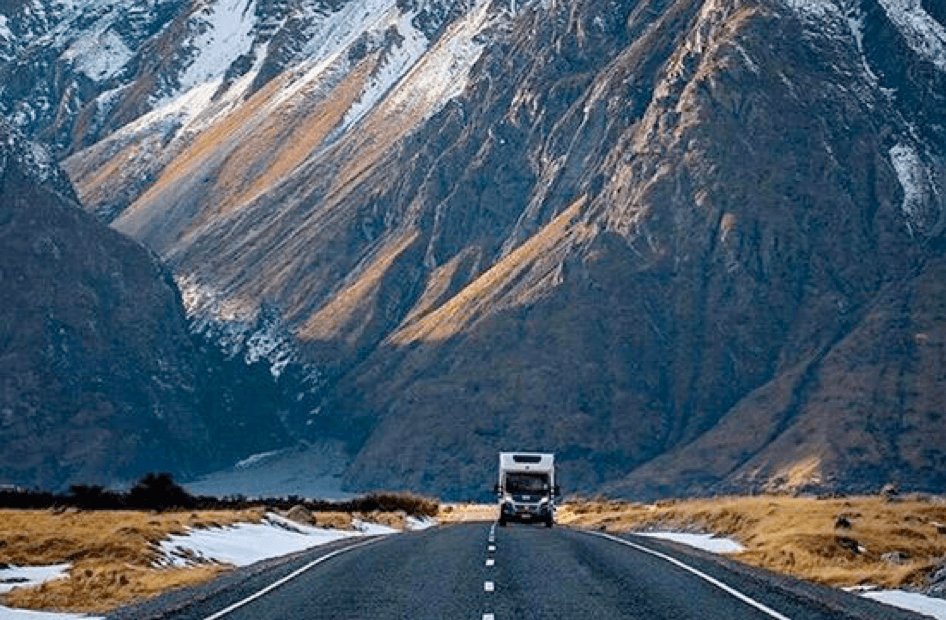Driving in New Zealand
NZ Roads & Traffic Conditions
New Zealand is long (1600km approx.) and narrow - at its widest point, approx. 400km wide. Whilst it is a wonderfully diverse and beautiful country, our driving conditions may vary from what you are used to. New Zealand does not have a lot of long, straight roads and we have relatively few motorways. Most roads are single lane in each direction, without barriers in the middle. Many are narrow, hilly and have sharp or unexpected turns. You may also encounter loose gravel roads, and livestock.
When planning your trip, allow enough time to have a break every two hours - drivers need to be alert. Click here for an online Travel Time and Distances calculator - it will also show a map of your route (we suggest you treat the estimated driving time as the minimum driving time). You can also check on Traffic and Road Closures on the NZTA website.


Weather Condition
Weather conditions can change quickly in New Zealand. Check the weather forecast/s along your route before leaving, especially if you will be driving in late autumn or winter (May, June, July, August), when it may also be advisable to carry snow chains in some areas. Snow chains can be included when booking or requesting a quote from Maugers Rentals.
Overview of New Zealand climate: NIWA | New Zealand Weather Forecasts: MetService | Weather Warnings: MetService
Road Guru
Discover and Book Your New Zealand Driver Guide
Road GURU is a trusted community marketplace for people to list, discover and book personal driver/guide services for travel around New Zealand. Whether a couple looking for luxury, a family looking for relaxation or a group of friends looking for convenience, Road GURU connects people with local driver guides at any price point, anywhere in New Zealand.

Driver License Requirement
Please note: to drive any of Maugers Rentals hire vehicles, the driver/s must hold a full ‘Class 1’ drivers licence. An International Driver’s Permit is required by law in New Zealand if the Licence is not in English. If the driver is intending to be rewarded or paid for driving, they also need a 'P' Passenger Endorsement and a 'PSL' Passenger Service Licence. Click here for NZ Transport Agency Drivers Licence information.
NZ Road Rules
It is extremely important to understand New Zealand Road Rules, Speed Limits, Traffic Signs and Signals. See the official New Zealand Road Code (New Zealand Transport Authority website).
You can also download the NZTA ‘Booklet for Overseas Drivers’ (PDF); in English, Spanish, Portuguese, French, German, simplified Chinese, traditional Chinese, Japanese, Korean, Thai, or Arabic.
Below are the main Speed Limit Signs you will see in New Zealand. NB: If you are driving and not feeling confident enough to drive to the speed limit, find a safe place to pull over and let following traffic pass.
-
Maximum speed limit for urban areas is 50km/h
-
Maximum speed on the open road is 100km/h
-
Limited Speed Zone (LSZ): you must drive 50km/h in adverse conditions, otherwise the 100km/h limit applies
-
Open Road: The maximum speed is 100km/h but drive to the conditions
Traffic Signals
-
Red Light:You must stop – you cannot go straight ahead or turn.
-
Red light + Green arrow:You may turn in the direction of the arrow, but not go straight ahead.
-
Yellow light:Stop unless you are too close to the lights to do so safely.
-
Yellow arrow + Yellow light:Whether you are intending to turn or go straight ahead, stop if you can do so safely.
-
Green light:Go, but give way (yield) to straight-through traffic if you are turning.
-
Green light + Red arrow:You cannot turn, but may go straight ahead.
Railway Crossings
Approximately half of New Zealand railway line crossings do not have automatic alarms. For those that do, flashing red lights mean a train is approaching; stop until the lights have stopped flashing. For railway line crossings without lights, there are ‘Railway Crossing’ signs - stop, look both ways and only cross if there are no trains approaching.
See NZ Give Way Rules
One Way Bridge
The simplest summary is to look for the sign as you approach a one-lane bridge: a red circle means YOU must give way, a blue rectangle means that other vehicles should give way to you. Learn more about giving way on one lane bridges.
